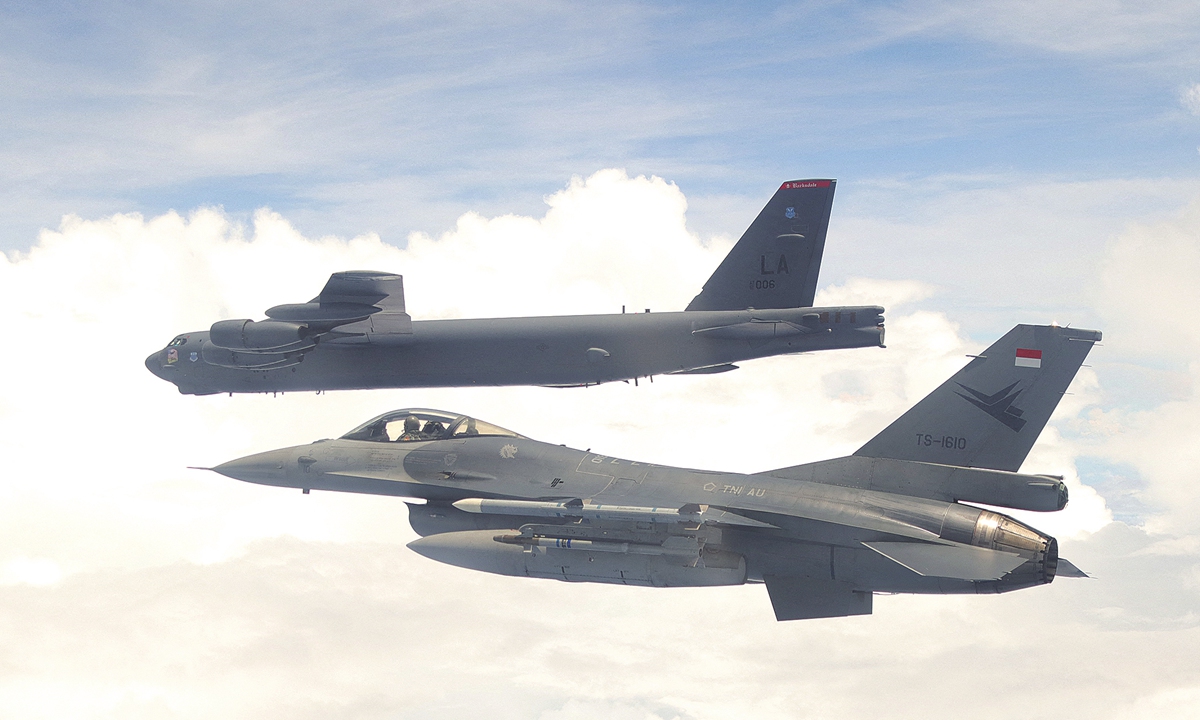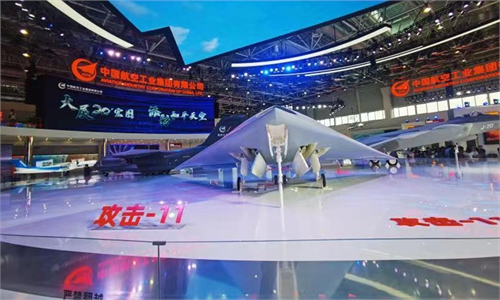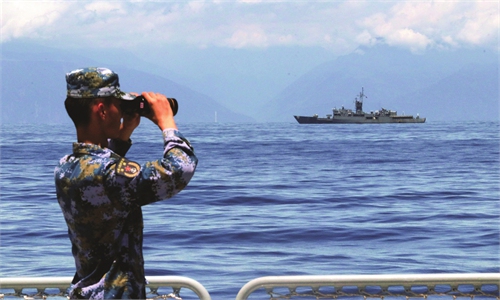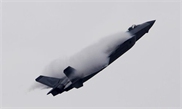
This handout photo from the Indonesian Air Force taken on Wednesday and released on Thursday shows a US bomber B-52 (top) and an Indonesian F-16 fighter jet as the Indonesian Air Force and United States of Pacific Air Force(US PACAF) conduct a joint exercise over Sulawesi waters in Indonesia.? Photo: AFP
The US made high-profile announcements over the past week on two of its strategic bombers, the fully upgraded B-52 and the brand new B-21, with Chinese experts saying on Monday that the duo are likely to become the US Air Force's core strategic strike force in the next few decades, and China should be prepared to counter the planes and also learn from them.
Northrop Grumman, the company that builds the B-21, announced on Thursday that the aircraft will be revealed to the public for the first time on December 2.
This will be the first public unveiling of a new Air Force bomber in 34 years, since the B-2 bomber's debut in November 1988, US media outlet Defense News reported on Thursday.
After the rollout, the B-21 will conduct its first flight in 2023, the report said.
The announcement on the B-21 came shortly after Boeing released a new image from a digital prototyping model that showed an upgraded B-52 bomber that is expected to receive the designation B-52J or B-52K, US magazine Air & Space Forces reported on Wednesday.
The new B-52 will be equipped with upgrades including new F130 engines to be built by Rolls-Royce, a variant of the AN/APG-79 radar used on the F/A-18EF fighter jet, and an updated cockpit, according to the magazine report.
Fu Qianshao, a Chinese military aviation expert, told the Global Times on Monday that the US now operates three types of strategic bombers - the first-generation bomber B-52, the-third generation bomber B-1B and the fourth-generation bomber B-2. According to the US Air Force's plan, the B-1B and the B-2 would retire after the development of the B-21 is complete.
This means only the oldest B-52 and the latest B-21 will remain in service, and the duo will become the US Air Force's core strategic strike force in the next few decades, Fu said.
The US Air Force is modernizing its old but still potent B-52 and developing the new B-21 at the same time, Zhang Xuefeng, another Chinese military expert, told the Global Times on Monday.
These two will form a combination of a high-end and a low-end bomber, Zhang said. "The low-end B-52 has little defense penetration capability, and the US Air Force could have it launch the under-development AGM-183 hypersonic missile from outside of enemy defense lines. But such missiles are expensive and limited in number, so the high-end B-21 will take advantage of its high stealth capability to penetrate hostile defense lines and use cheap munitions like JDAM," Zhang said.
China needs to prepare for this US tactic, as the two types of bombers could be deployed against China, experts warned.
No matter how many upgrades the B-52 gets, it can never become stealth-capable and it can only launch standoff missiles. China should develop its capabilities in long-range detection and long-range interception by deploying warplanes and warships further away from its homeland into the blue-water regions.
The B-21, on the other hand, has a shorter range than the B-2 and relies on operating bases, so attacking those bases and airfields where it is deployed is the way to go, analysts said.
China can also learn from the US' strategic bomber development, Fu said.
China's H-6 bomber is of the same generation as the B-52, and it has also received many upgrades that have transformed it from a medium-range bomber to a medium-to-long-range strategic bomber.
Once China's next-generation bomber, the H-20, is developed, it will be at the same level as the B-21, and likely surpass it in some aspects, Fu said.




